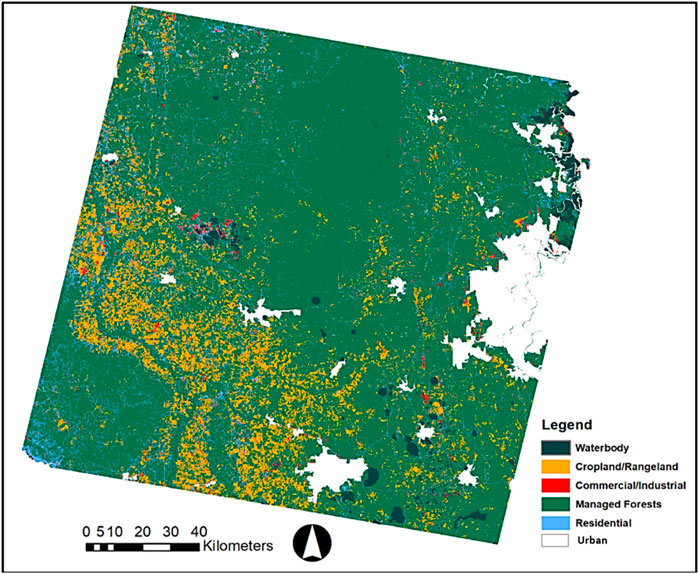
FU, SOUTHWORTH, BINFORD – Linking forest management to surrounding lands: a citizen-based approach towards the regional understanding of land-use transitions
Di Yang, Chiung-Shiuan Fu, Hannah Herrero, Jane Southworth, Michael Binford
Article first published online: 13 July 2023
DOI: https://doi.org/10.3389/frsen.2023.1197523
ABSTRACT: The Southeastern United States has high landscape heterogeneity, with heavily managed forestlands, developed agriculture, and multiple metropolitan areas. The spatial pattern of land use is dynamic. Expansion of urban areas convert forested and agricultural land, scrub forests are converted to citrus groves, and some croplands transition to pine plantations. Previous studies have recognized that forest management is the predominant factor in structural and functional changes forests, but little is known about how forest management practices interact with surrounding land uses at the regional scale. The first step in studying the spatial relationships of forest management with surrounding landscapes is to be able to map management practices and describe their proximity to various land uses. There are two major difficulties in generating land use and land management maps at the regional scale by any method: the necessity of large training data sets and expensive computation. The combination of crowdsourced, citizen-science mapping and cloud-based computing may help overcome those difficulties. In this study, OpenStreetMap is incorporated into mapping land use and shows great potential for justifying and monitoring land use at a regional scale. Google Earth Engine enables large-scale spatial analysis and imagery processing by providing a variety of Earth observation datasets and computational resources. By incorporating the OpenStreetMap dataset into Earth observation images to map forest land management practices and determine the distribution of other nearby land uses, we develop a robust regional land-use mapping approach and describe the patterns of how different land uses may affect forest management and vice versa. We find that cropland is more likely to be near ecological forest management patches; few close spatial relationships exist between land uses and preservation forest management, which fulfills the preservation management strategy of sustaining the forests, and production forests have the strongest spatial relationships with croplands. This approach leads to increased understanding of land-use patterns and management practices at local to regional scales.
Read the full publication in Frontiers in Remote Sensing.